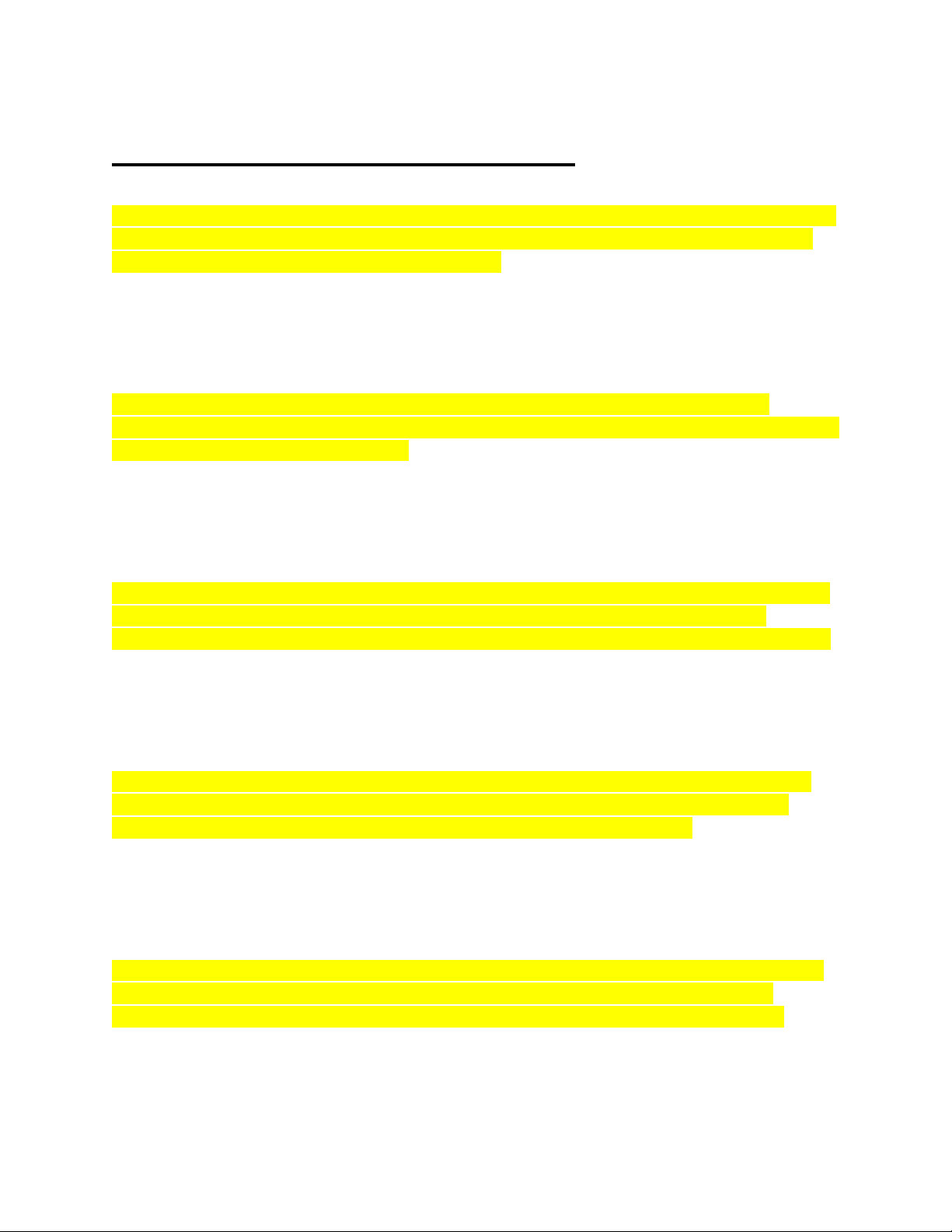
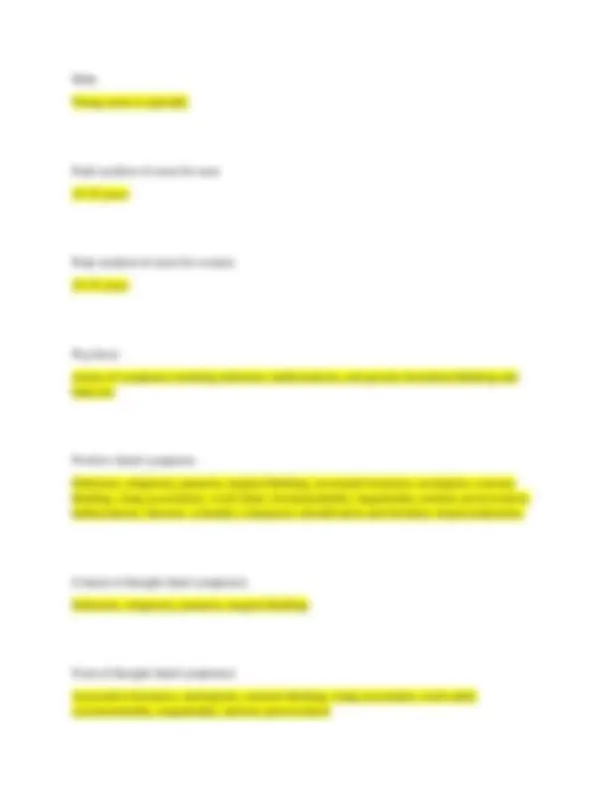
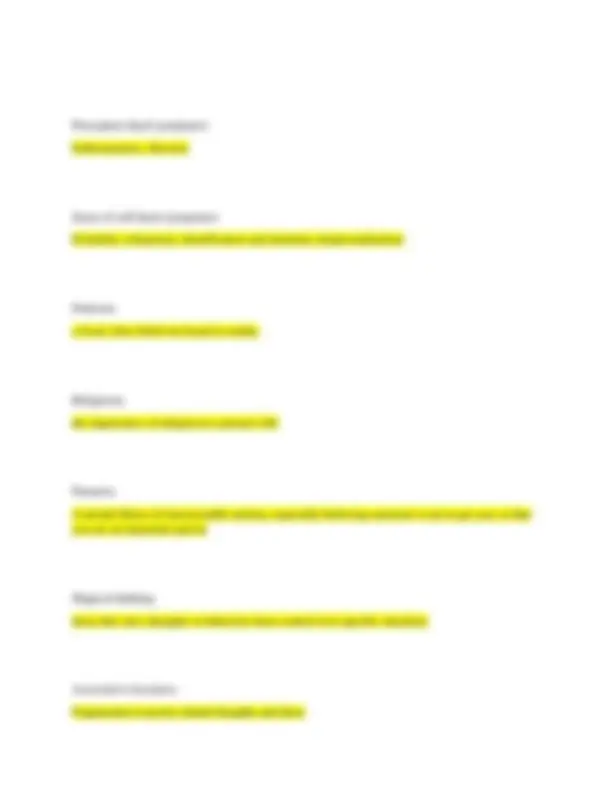
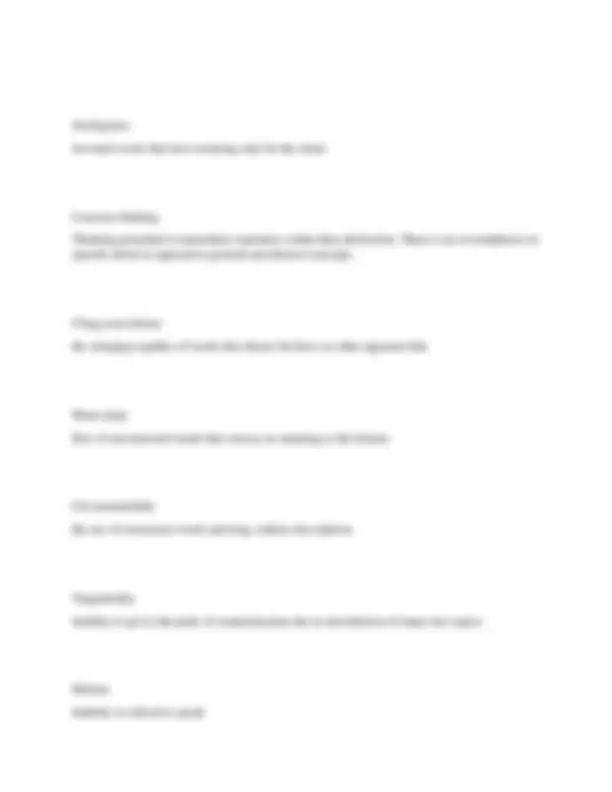
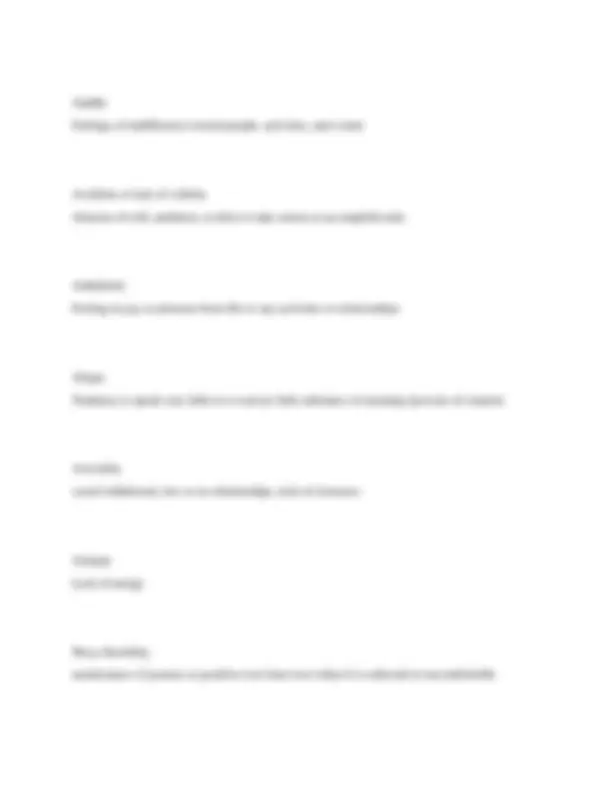
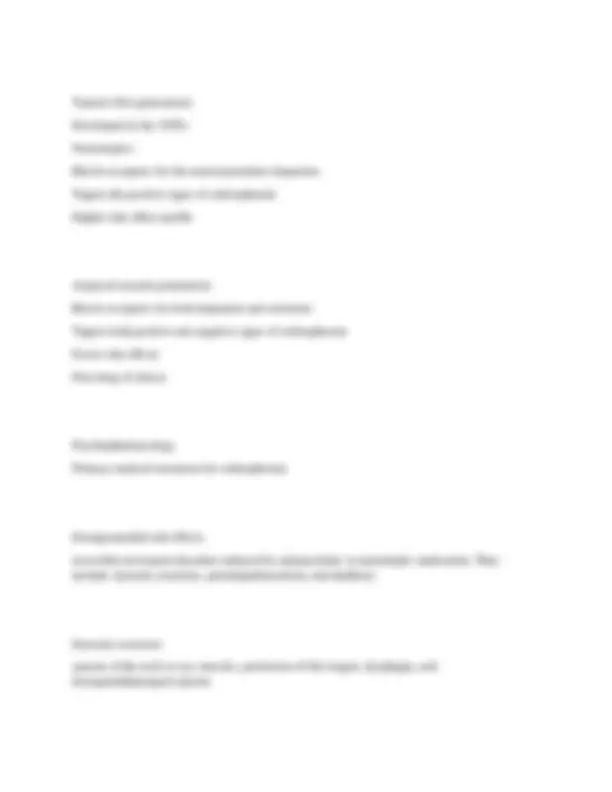
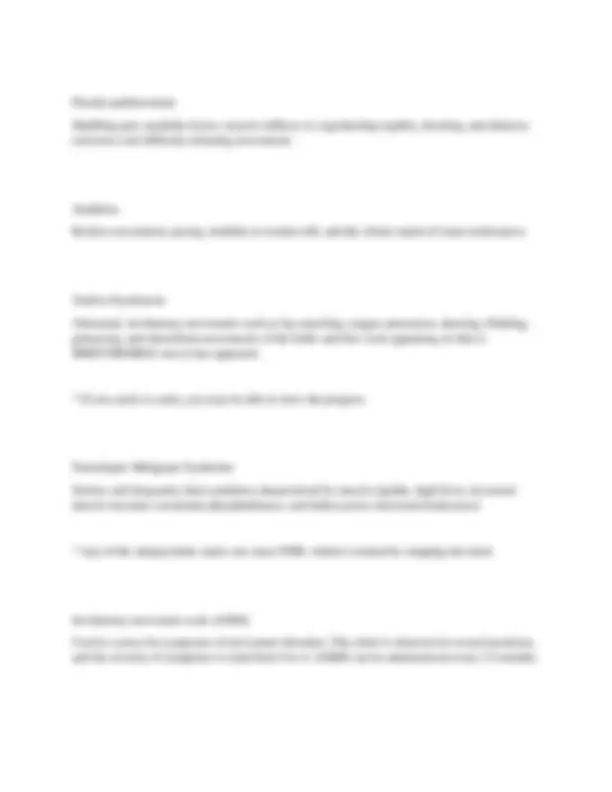
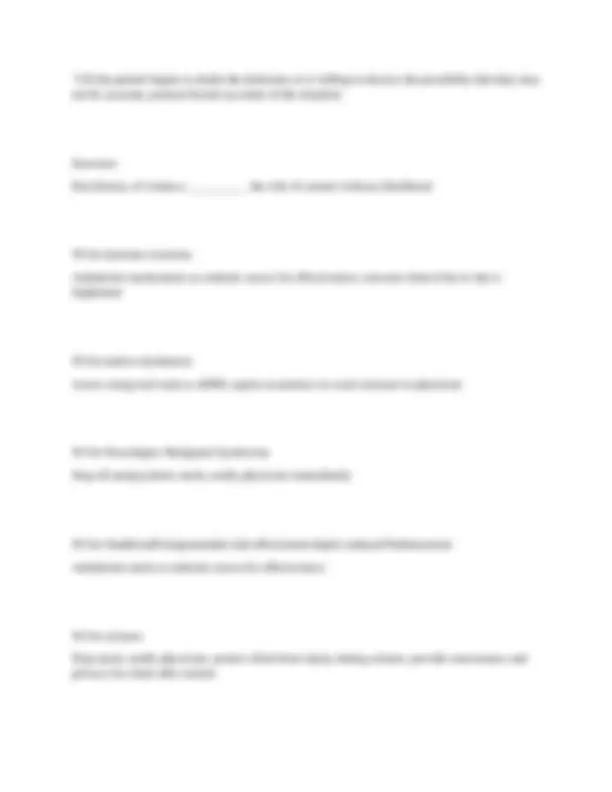
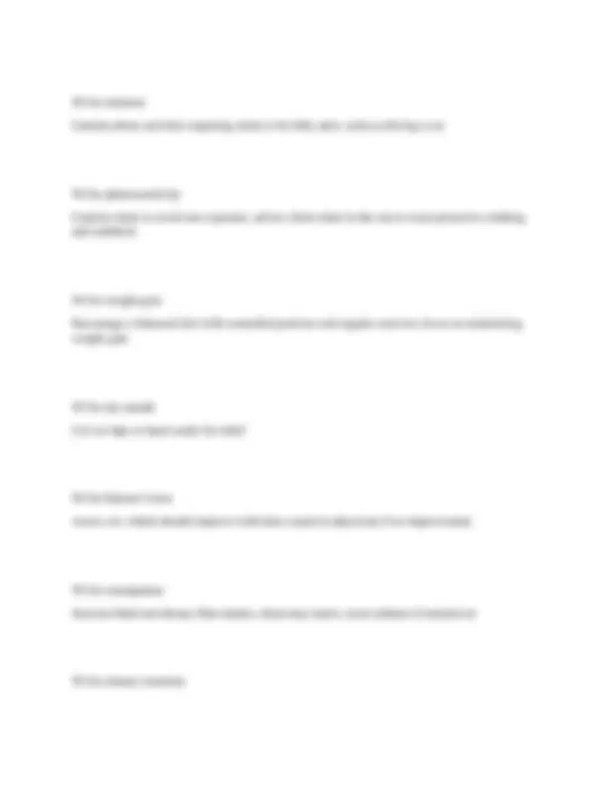
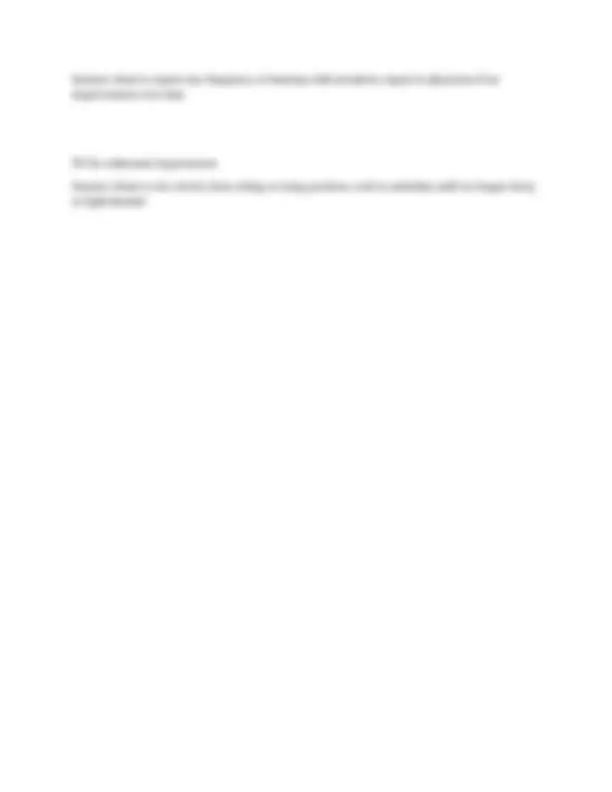


Study with the several resources on Docsity

Earn points by helping other students or get them with a premium plan


Prepare for your exams
Study with the several resources on Docsity

Earn points to download
Earn points by helping other students or get them with a premium plan
Community
Ask the community for help and clear up your study doubts
Discover the best universities in your country according to Docsity users
Free resources
Download our free guides on studying techniques, anxiety management strategies, and thesis advice from Docsity tutors
A comprehensive overview of schizophrenia, covering its symptoms, types, treatment options, and potential side effects. It delves into the distinction between positive and negative symptoms, explores various subtypes of schizophrenia, and discusses the role of psychopharmacology in managing the disorder. The document also highlights the importance of monitoring for potential side effects of antipsychotic medications, including extrapyramidal side effects, tardive dyskinesia, and neuroleptic malignant syndrome. It emphasizes the need for careful observation and management of these side effects to ensure patient safety and well-being.
Typology: Exams
1 / 15

This page cannot be seen from the preview
Don't miss anything!










Schizophrenia causes distorted and bizarre thoughts, perceptions, emotions, movements, and behavior. It cannot be defined as a single illness; rather, schizophrenia is thought of as a syndrome or as a disease process with many different varieties and symptoms Schizotypal (personality) disorder characterized by a pervasive pattern of social and interpersonal deficits marked by acute discomfort with and reduced capacity for close relationships as well as by cognitive or perceptual distortions and behavioral eccentricities Delusional disorder The client has one or more nonbizarre delusions—that is, the focus of the delusion is believable. The delusion may be persecutory, erotomanic, grandiose, jealous, or somatic in content. Psychosocial functioning is not markedly impaired, and behavior is not obviously odd or bizarre Brief Psychotic disorder The client experiences the sudden onset of at least one psychotic symptom, such as delusions, hallucinations, or disorganized speech or behavior, which lasts from 1 day to 1 month. The episode may or may not have an identifiable stressor or may follow childbirth Schizophreniform disorder The client exhibits an acute, reactive psychosis for less than the 6 months necessary to meet the diagnostic criteria for schizophrenia. If symptoms persist over 6 months, the diagnosis is changed to schizophrenia. Social or occupational functioning may or may not be impaired
Schizoaffective disorder Psychotic disorder featuring symptoms of both schizophrenia and major mood disorder, such as bipolar 1 Shared psychotic disorder Two people share a similar delusion. The person with this diagnosis develops this delusion in the context of a close relationship with someone who has psychotic delusions, most commonly siblings, parent and child, or husband and wife. Catatonia Characterized by marked psychomotor disturbance, either excessive motor activity or virtual immobility and motionlessness. Clinical Duration and Course
Perception (hard symptoms) Hallucinations, illusions Sense of self (hard symptoms) Echolalia, echopraxia, identification and imitation, depersonalization Delusion a fixed, false belief not based in reality Religiosity the importance of religion in a person's life Paranoia A mental illness of unreasonable anxiety, especially believing someone is out to get you, or that you are an important person Magical thinking ideas that one's thoughts or behaviors have control over specific situations Associative looseness Fragmented or poorly related thoughts and ideas
Neologisms invented words that have meaning only for the client Concrete thinking Thinking grounded in immediate experience rather than abstraction. There is an overemphasis on specific detail as opposed to general and abstract concepts. Clang associations the stringing together of words that rhyme but have no other apparent link Word salad flow of unconnected words that convey no meaning to the listener Circumstantiality the use of extraneous words and long, tedious descriptions Tangentiality inability to get to the point of communication due to introduction of many new topics Mutism Inability or refusal to speak
Holding seemingly contradictory beliefs or feelings about the same person, event, or situation Flight of ideas Continuous flow of verbalization in which the person jumps rapidly from one topic to another Ideas of reference False impressions that external events have special meaning for the person Bizarre behavior Outlandish appearance or clothing; repetitive or stereotyped, seemingly purposeless movements; unusual social or sexual behavior Negative (soft) symptoms Inappropriate affect, bland or flat affect, apathy, inability to initiate goal directed activity, emotional ambivalence, deteriorated appearance, impaired social interaction, social isolation, anergia, waxy flexibility, posturing, pacing and rocking, anhedonia, regression Inappropriate affect displaying a facial expression that is incongruent with mood or situation; often silly or giddy regardless of circumstances Bland or flat affect Absence of any facial expression that would indicate emotions or mood
Apathy Feelings of indifference toward people, activities, and events Avolition or lack of volition Absence of will, ambition, or drive to take action or accomplish tasks Anhedonia Feeling no joy or pleasure from life or any activities or relationships Alogia Tendency to speak very little or to convey little substance of meaning (poverty of content) Asociality social withdrawal, few or no relationships, lack of closeness Anergia Lack of energy Waxy flexibility maintenance of posture or position over time even when it is awkward or uncomfortable
Pseudo-parkinsonism Shuffling gait, masklike facies, muscle stiffness or cogwheeling rigidity, drooling, and akinesia (slowness and difficulty initiating movement) Akathisia Restless movement, pacing, inability to remain still, and the clients report of inner restlessness Tardive Dyskinesia Abnormal, involuntary movements such as lip smacking, tongue protrusion, chewing, blinking, grimacing, and choreiform movements of the limbs and feet. Late appearing s/e that is IRREVERSIBLE once it has appeared.
Seizures Are an infrequent s/e associated with antipsychotic meds. The incidence is 1% of people taking antipsychotics. The notable exception is Clozapine, which has an incidence of 5% Agranulocytosis Clozapine has the potentially fatal s/e of agranulocytosis (failure of the bone marrow to produce adequate WBC). Develops suddenly and is characterized by fever, malaise, ulcerative sore throat, and leukopenia. *Can occur up to 18-24 weeks after initiation of therapy *Clients taking this must have a weekly WBC count for the first 6 months and every 2 weeks thereafter. *Dispensed every 7 or 14 days. Client must have WBC count above 3500 cells to get a refill Psychomotor retardation General slowing of all movements Blunted affect few observable facial expressions Command hallucinations are voices demanding that the client take action, often to harm self or others, and are considered dangerous. Anticholinergic side effects (gen 1 and 2 both cause these s/e)
*AS the patient begins to doubt the delusions or is willing to discuss the possibility that they may not be accurate, present factual accounts of the situation Increases Past history of violence __________ the risk of current violence likelihood NI for dystonic reactions Administer medications as ordered; assess for effectiveness; reassure client if he or she is frightened NI for tardive dyskinesia Assess using tool such as AIMS; report occurrence or score increase to physician NI for Neuroleptic Malignant Syndro/me Stop all antipsychotic meds; notify physician immediately NI for Akathisia/Extrapyramidal side effects/neuroleptic induced Parkinsonism Administer meds as ordered; assess for effectiveness NI for seizures Stop meds; notify physician; protect client from injury during seizure; provide reassurance and privacy for client after seizure
NI for sedation Caution about activities requiring client to be fully alert, such as driving a car NI for photosensitivity Caution client to avoid sun exposure; advise client when in the sun to wear protective clothing and sunblock NI for weight gain Encourage a balanced diet with controlled portions and regular exercise; focus on minimizing weight gain NI for dry mouth Use ice hips or hard candy for relief NI for blurred vision Assess s/e, which should improve with time; report to physician if no improvement NI for constipation Increase fluid and dietary fiber intake; client may need a stool softener if unrelieved NI for urinary retention